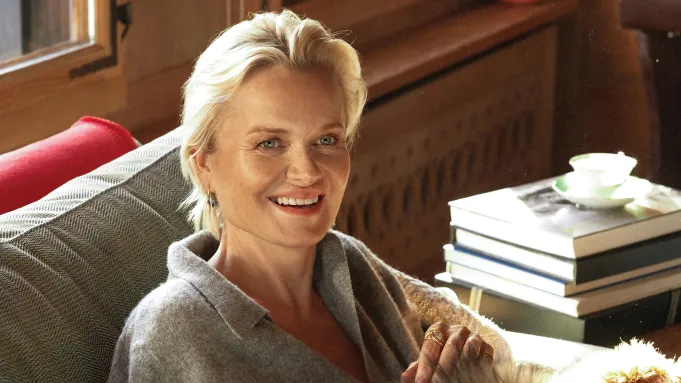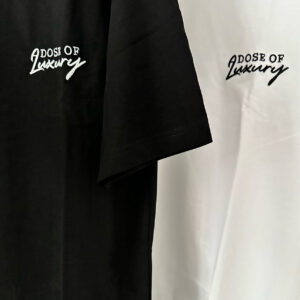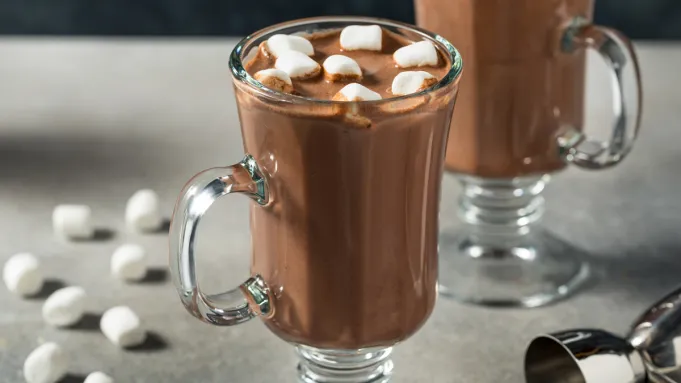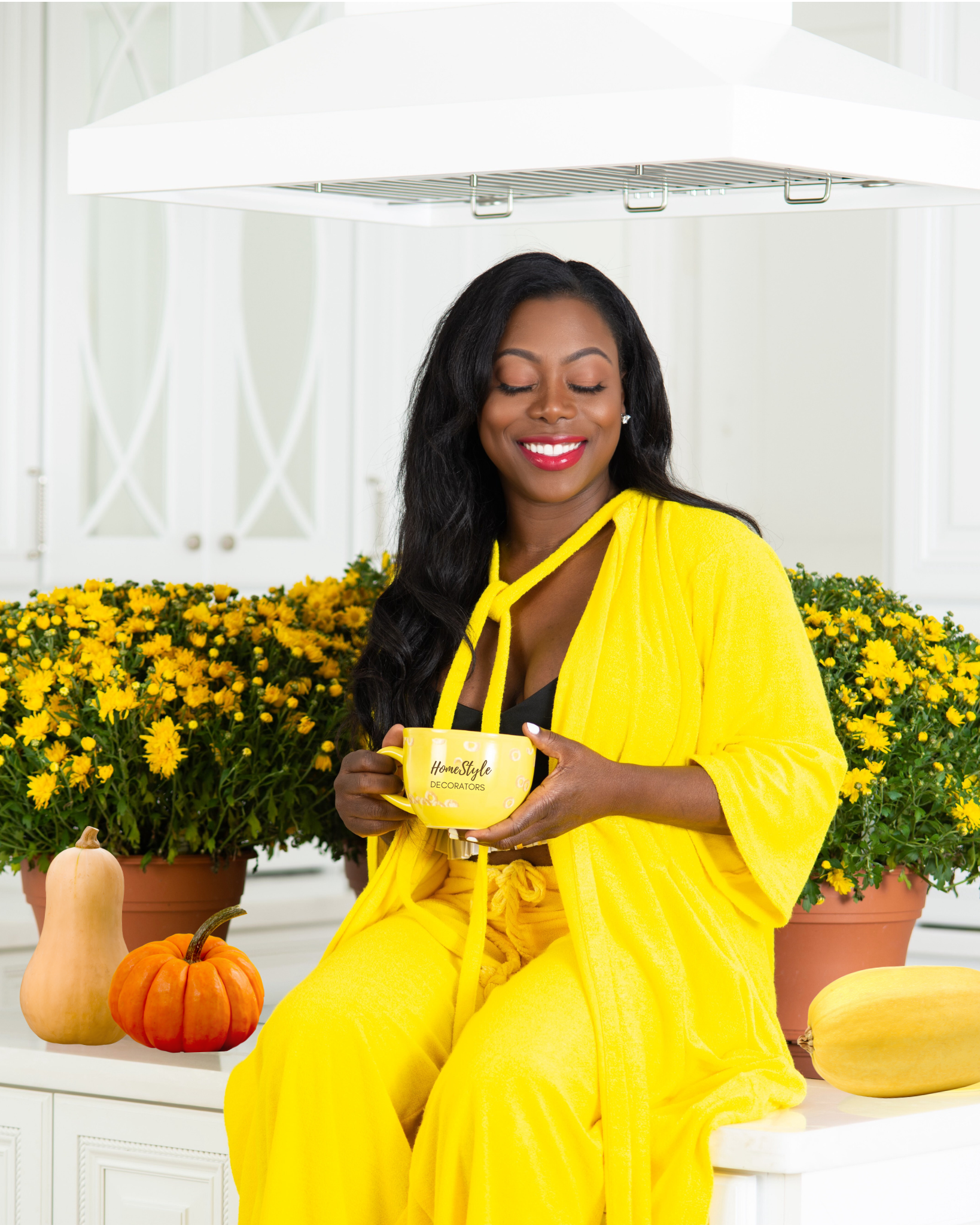
It’s a summery Monday in Gstaad, and Dr. Barbara Sturm has just finished an afternoon of tennis with her younger daughter, Pepper, who recently turned 11. But if the renowned skincare guru is at all worn out from the sun—or from trying to keep up with a tween—she doesn’t show it. Her animated energy is one of many qualities that can make Sturm seem younger than her 53 years. (A blonde pixie cut and petite frame help, too.) And though she has built an empire on products that bear the “anti-aging” label, her age isn’t something she’s afraid to acknowledge.
Take her decision to relocate to the glamorous Swiss enclave she now calls home. Sturm and her family moved here from Düsseldorf about three years ago, just ahead of her 50th birthday. “When you hit 50, you can do two decisions,” she says in a matter-of-fact tone. “You keep working like a crazy person 24/7… or you change your lifestyle.” In pursuit of a healthier day-to-day and more opportunities to hike and play sports outdoors, she went in search of “a base to come back to, where you actually take time for all the things you wouldn’t if you were just in the office.”
Not that she’s resting on her laurels. She still travels regularly to promote her brand, Dr. Barbara Sturm Molecular Cosmetics, checking in on the spas in London, Los Angeles, New York City, Miami, Dallas, and Düsseldorf that bear her name. She still reviews new formulations from her Swiss chalet. And since moving here, she has achieved the kind of success most founders dream of but rarely realize. In April 2023, Oprah Winfrey invested an undisclosed sum in Sturm’s business. Less than a year later, Puig—the Spanish conglomerate that owns Dries Van Noten, Christian Louboutin, and the fragrance house Byredo—purchased a majority stake in a deal that reportedly valued Sturm’s company at $400 million. The agreement coincided neatly with the 10th anniversary of her brand.
Asked to pinpoint the moment when she felt she’d made it, she demurs. To hear her tell it, she never set out to breathe such rare air. “I’m pretty much someone who sees life as a journey—a journey that can be adjusted,” she says brightly. “Maybe tomorrow, I’ll decide to go somewhere else, or do something else, or live on a boat.”

Sturm’s spa and boutique in New York’s SoHo.
Courtesy of Dr. Sturm
“For lack of a better word, and maybe pun intended, she’s very comfortable in her skin,” says Athena Calderone, a New York–based interior designer who started using Sturm’s products eight years ago, before they met and became friends. “I think she’s a really good example, to see this beautiful, confident woman expressing herself and moving through the world with such grace. And we need more of that.”
But Sturm wasn’t always the kind to go with the flow. From a young age, she was resolute in her desire to be a pediatrician. That goal changed at 23, when Sturm had a daughter, Charlotte, with her first husband. (Charly, as she’s known, is now 29 and serves as senior vice president of brand development and an ambassador for her mother’s company.) Soon after, her coursework required stints in a high-stakes neonatal ward, an arena that felt just a little too close to home while she tended to her own infant. “I was in a hospital taking care of all these poor babies, and I couldn’t handle it,” she says.
At the time, her medical school, Heinrich Heine University, was seeking someone to conduct a study on the bodies of skiers. Sturm had grown up on the slopes, so she went for it—and sports medicine proved a much better fit. “I loved it, because there’s no life-or-death situation,” she says. Plus, it meant she could go and ski with the pros.
By the time she’d earned her medical degree, she’d also gotten divorced. To support herself and Charly, Sturm joined the orthopedic practice of Peter Wehling, M.D., Ph.D, in Dusseldorf, which in the aughts became an unlikely center of excellence for regenerative medicine. Wehling believed inflammation is at the root of joint pain and that human blood contained a remedy. His research led to a treatment called Regenokine, in which a patient’s blood is drawn, heated to increase the concentration of anti-inflammatory proteins, processed into a serum, then injected into the area that needs repair.
It was revolutionary—and Sturm had a front-row seat. The innovation showed her that “you don’t have to rely on what’s out there,” she says. “You can also come up with something which might be better or more effective.” It inspired her to develop an in-office treatment for the face in 2002, which she called MCX, or Molecular Cosmetics X. Often referred to as the blood facial, the procedure involved injecting the client’s own plasma into an area of the face that needed rejuvenation, such as under the eyes or behind forehead wrinkles. Some of the plasma was held back and applied topically in a mask. Later that year, Sturm asked her grandmother, a pharmacist, to help her turn her own anti-inflammatory proteins into a cream she could apply nightly. It worked so well for her dry skin that she stopped seeing her facialist. When she began making the cream for patients, she named it MC1.
Her interest in aesthetics led Sturm to learn other facial procedures, including how to inject Botox and fillers. She soon began traveling to L.A., eventually attracting a clientele that was also willing to come to Düsseldorf for her services.
One of them was the actor George Hamilton, who also became Sturm’s boyfriend. (Hamilton, 34 years her senior, was later quoted as saying that while they’d gotten engaged during their multiyear relationship, they broke it off because she wanted another child and he didn’t.) Her profile began to rise. Once word got out about her treatments, her list of devotees started growing; like Hamilton, some of her more famous clients became friends. Cher introduced Sturm to her second husband—Pepper’s father—the well-known entertainment lawyer Adam Waldman. The two married in the backyard of the singer’s Malibu estate in 2013, with their friends Will Smith, Jada Pinkett Smith, and Val Kilmer in attendance.
Sturm opened her own clinic in 2006 in Düsseldorf, where fans of MC1 began asking her what other products they should be using. “I was fine with one cream,” she says. Nevertheless, she created a cleanser and a hydrating hyaluronic-acid serum because, she says, she couldn’t find products on the market worth recommending.
The line grew slowly, by word of mouth, and in 2014, she formally launched a full skincare collection, adding three moisturizers for different skin concerns and a scrub for gentle exfoliation. With her research-driven ingredient profiles and unscented formulations, she quickly consolidated celebrity support from the likes of Gwyneth Paltrow and Katie Holmes. In 2016, when Angela Bassett told Sturm that she had trouble finding products suitable for melanin-rich skin, Sturm answered with a line dedicated to people with darker skin tones. She even makes formulas for teens with acne: Her waggishly named Ultimate Stinky Pimple Treatment uses a nitrogen-rich oil to combat breakouts. And while Sturm offers a small group of men’s options (the Face Cream Men doubles as an after-shave soother), some of her male clientele seem content to buy the primary unisex line. Miles Chamley-Watson, the Olympic fencer, uses Sturm’s vitamin C serum. Calderone, the designer, says her husband, Victor, steals her jar of Sturm’s Super Anti-Aging Face Cream “all the time.”

Oprah Winfrey, who invested in Sturm’s business in 2023, interviews the physician and entrepreneur on Oprah Daily.
Courtesy of Oprah Daily
Sturm now offers about 300 individual products, from shampoos and body washes to sunscreens and lip balm. They’re available on her website and at stores including Saks Fifth Avenue and Selfridges, but anyone who wants a jar of MC1 will have to visit her Düsseldorf spa for a blood draw.
She recently relaunched two of her most expensive products from the Exoso-metic line: an exosome-powered eye serum ($435) and another for the rest of the face ($535). Exosomes—microscopic structures that send information from cell to cell, encouraging repair—also harness the body’s natural healing mechanisms. A recent study found that the lab-derived exosomes in this line can reduce the skin’s biological age by between four and five years after just a month of use.
It’s a big claim, but Sturm’s brand isn’t the only one making one like it. In the past few years, dozens of skincare operations, old and new, have offered serums with “growth factors,” “peptides,” and other ingredients that promise to rejuvenate the skin, in some cases without the research to back it up. “Now it’s like, such a buzzword, but if you think about it, 25 years ago, we were already talking about giving exosomes to patients,” she says. The study brings that intention full circle. “I love to bring science into a field that is driven by marketing,” she adds.
But she also loves Pepper, who has been listening patiently to our entire conversation and has other places to be. “I’m dying,” she says. “Can we go home?” Not long after we speak, Sturm posts a carousel of images on her personal Instagram account from the Hotel du Cap-Eden-Roc in Cap d’Antibes. In one, Pepper stands in the salon of a yacht, having just blown out the candles on a birthday cake. And if throwing that kind of party for an 11-year-old isn’t a “made it” moment, what is?
Authors
-

Justin Fenner
Lifestyle Director
Justin Fenner is Robb Report’s lifestyle director. He’s been covering style, grooming, and watches for over a decade, traveling across the world to examine how these topics intersect with the broader…
instagram:
Error: No feed with the ID 1 found.
Please go to the Instagram Feed settings page to create a feed.









